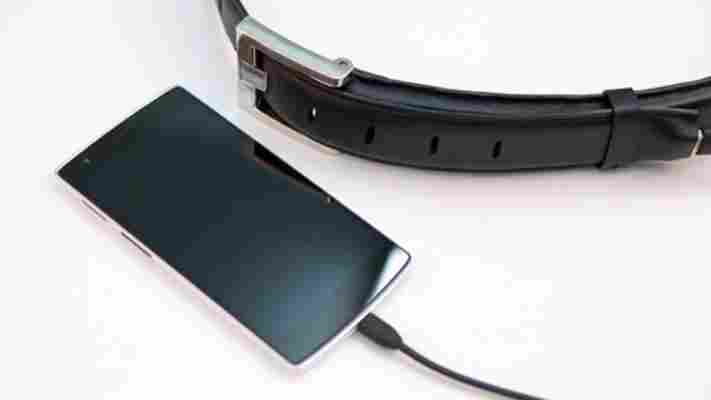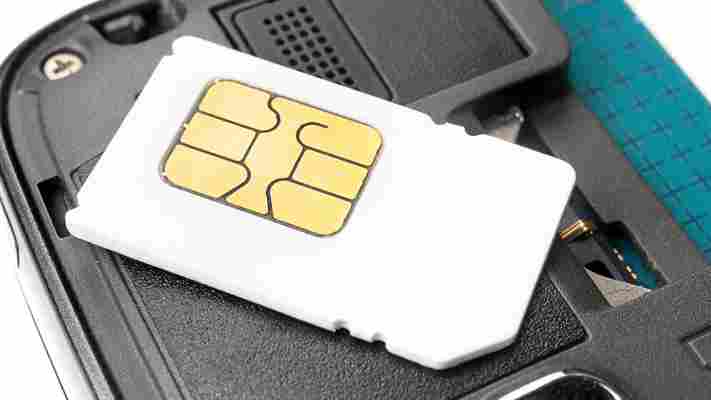Last year, I tried a prototype of the XOO belt – a wearable battery for your smartphone. It contained flexible batteries that meant it worked just like a normal belt but with the addition of a discrete cable you could use to charge your phone on the go. It was a neat idea but it proved too expensive to mass produce.

Developers Nifty (also known for the MiniDrive ) went back to the drawing board. They’ve collaborated with a US-based team led by inventor and Shark Tank alum Aaron Krause to create a second-generation product called the Ion Belt . It’s launched on Kickstarter today looking to raise $50,000.
The new, lower cost design boasts a larger 3,000 man battery, and the buckle is designed to plug right into a USB wall charger, making it easy to charge the belt up when it’s run dry.
To reduce the cost, a different type of battery has been used compared to the XOO. The older model, with its flexible batteries, has become a $499 high-fashion product while the Ion Belt is available to Kickstarter backers for $89 and will retail for around $130. It’s scheduled to ship in June 2016.
As someone who carries a bulky but powerful Anker battery around most times he leaves the house, the idea of swapping to a belt is appealing. Hopefully it’ll be second time lucky for the wearable battery dream.
➤ Ion Belt [Kickstarter]
Garmin’s $150 Vivomove is the only fitness tracker I’d consider wearing
It isn’t often that you spot a fitness tracker that you can wear to the office without looking like a health nut. I’m not one, but I’d still like to track my steps each day.

That’s why I’m intrigued by Garmin’s latest wearable. The Vivomove blends classic analog watch styling with modern tech, giving it the ability to track your steps and sleep, while fitting in with just about any outfit.
Besides the indices and hands on the traditional watch face, there’s a bar that shows you how many steps you’ve covered with relation to your daily goal you set in the companion app and another one that encourages you to get up when you’ve been immobile for a while.
The Vivomove connects to Garmin’s Connect Mobile app to sync your data so you can get insights on your fitness and sleep patterns. The company says the watch runs a whole year on a single battery and is water resistant up to 50m, which means it’s okay to shower with but not to wear while swimming.
That certainly works for me – I’m not keen on smartwatches that last only a couple of days on a full charge, require me to lug around a proprietary charger and bug me with notifications.
The Vivomove is available in a range of finishes and with different straps and dial colors. Prices start at $149.99 for the ‘sport’ style in black or white and go up to $299.99 for the premium editions (a stainless steel or gold-tone steel case with leather band).
You can also grab additional silicone sport bands for $29.99, leather ones at $59.99, or use any other 20mm watch strap.
Apple and Samsung are reportedly gearing up to get rid of the traditional SIM card
Apple and Samsung – along with several others in the telecoms industry – might be gearing up to get rid of the need for a traditional user-swappable SIM card.

According to the Financial Times , the two companies are working with the GSMA – the association that runs the GSM telephone system used by T-Mobile, AT&T in the US and most carriers worldwide – to implement an E-SIM (embedded SIM) card.
Whereas a traditional SIM card associates you with specific networks, an E-SIM would allow a device to switch between carriers instantly. As the name implies, however, this chip wouldn’t be user accessible; but then again, there’s no reason for it to be.
The E-SIM not expected to immediately supplant the traditional SIM however, as those are currently too widely adopted. Still, support already appears to be widespread: AT&T, Deutsche Telekom, Etisalat, Hutchison Whampoa, Orange, Telefónica and Vodafone are all expected to support the new standard so far. If more carriers and manufacturers sign up, it’s likely the traditional SIM will go the way of the dodo on consumer devices.
Apple’s support for the standard wouldn’t come as a huge surprise. Last year, Apple introduced its own SIM chip for the iPad Air 2, which allowed you to switch carriers while traveling without ever having to remove the chip from the device.
➤ Apple, Samsung in talks with telecom groups to launch e-Sim card [Financial Times]
Read next: Apple just introduced a SIM that you don’t have to replace when you switch carriers
Featured image credit: Shutterstock
